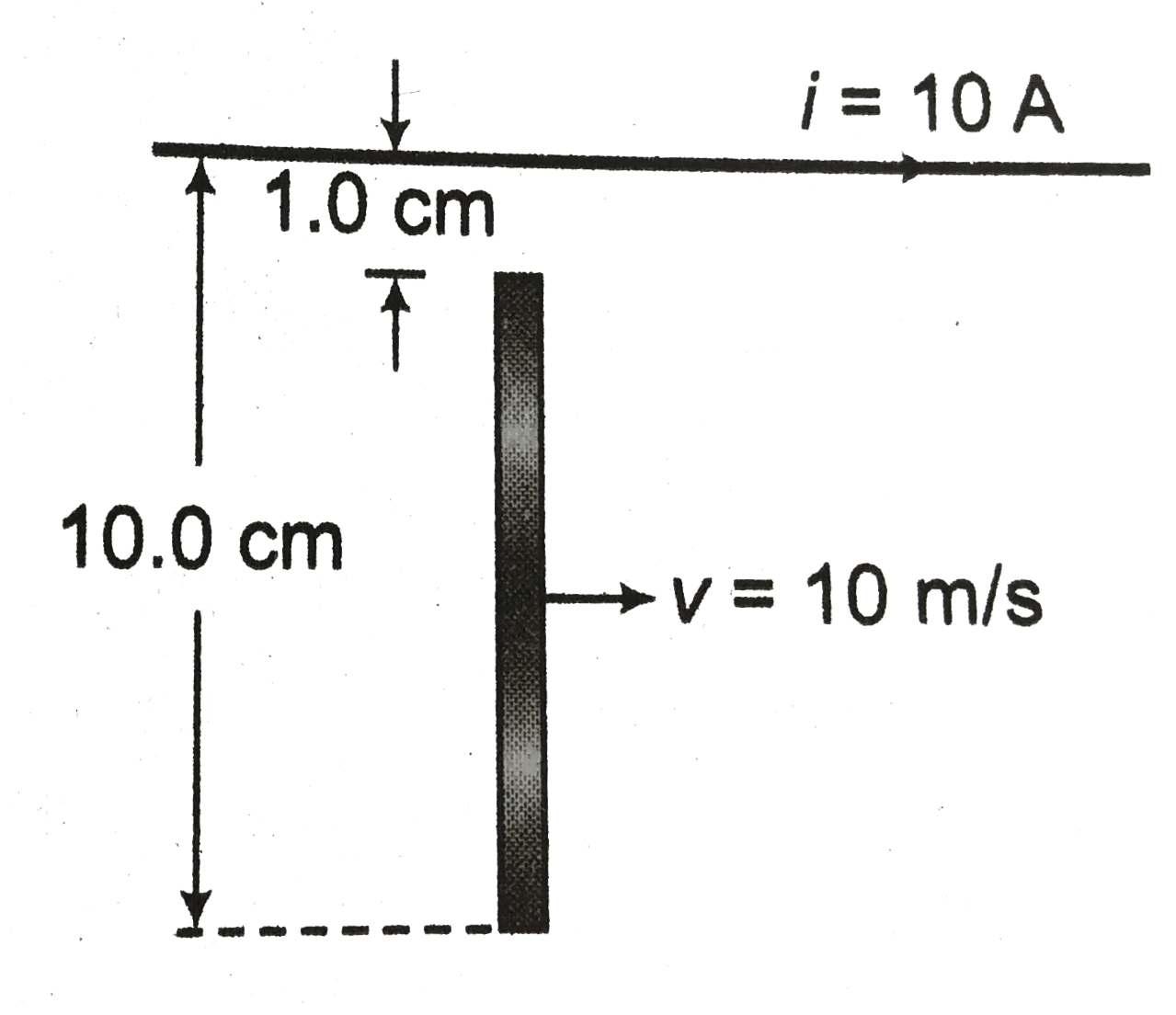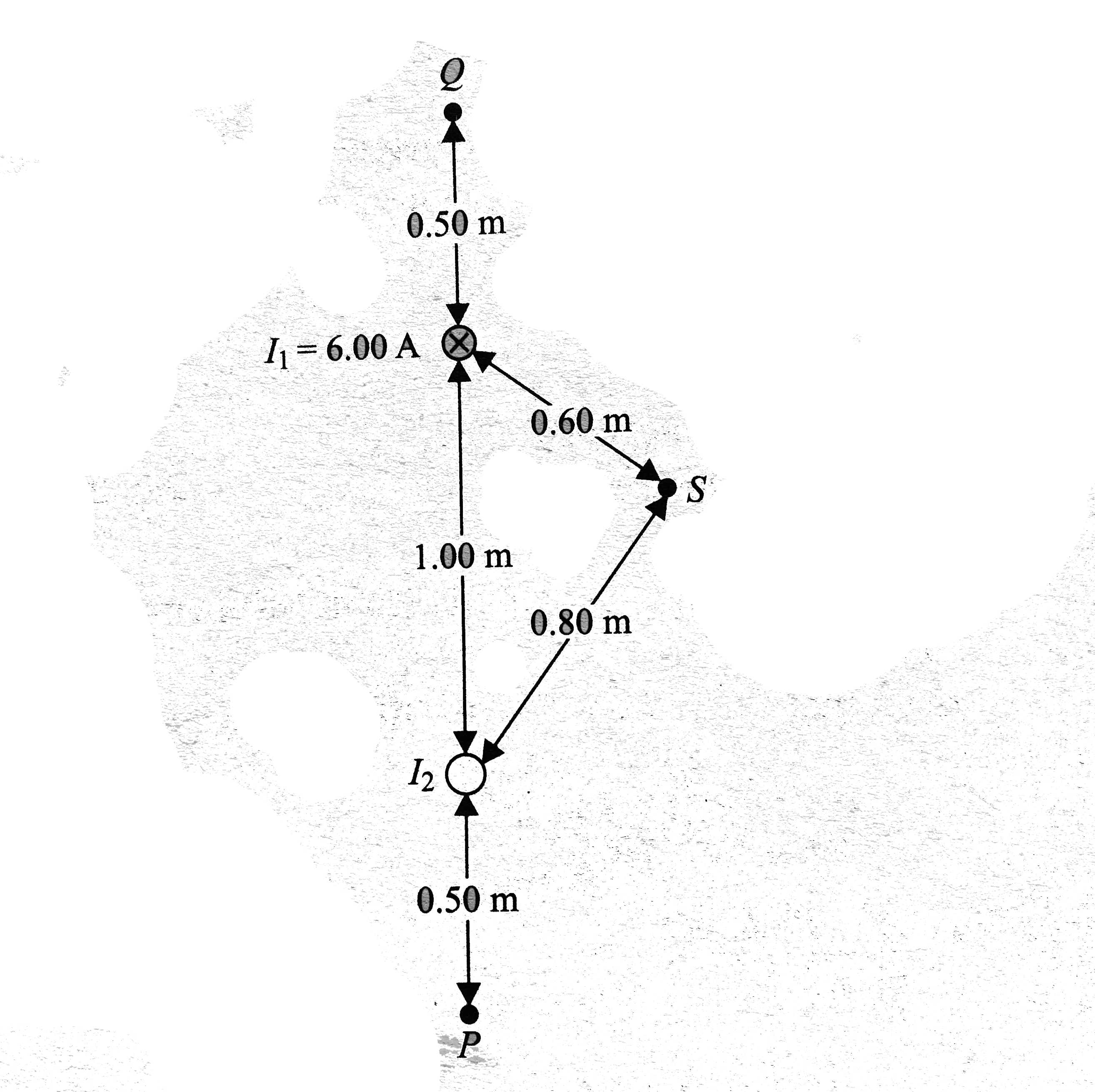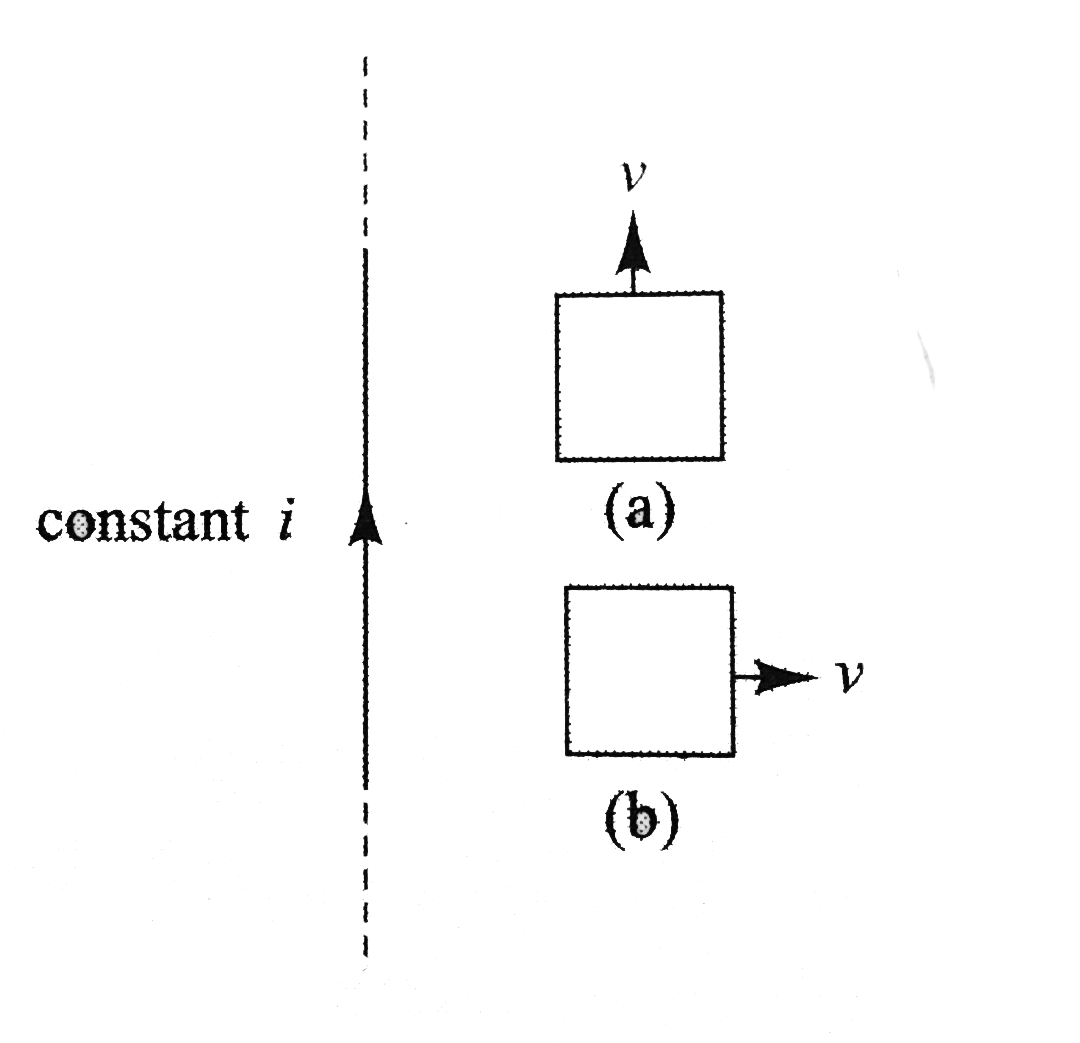In figure, a wire perpendicular to a long straight wire is moving parallel to the later with a speed v=10m/s in the direction of the current flowing in the later. The current is 10A. What is the magnitude of the potential difference between the ends of the moving wire?

The correct Answer is:A
B=μ02πir
dV=Bvdr=μ0iv2π∫drr
V=∫r2r1dV=μ0iv2πln(r2r1)
Topper's Solved these Questions
- ELECTROMAGNETIC INDUCTIONBook:DC PANDEYChapter:ELECTROMAGNETIC INDUCTIONExercise:Level 2 Single Correct
Explore 37 Videos
- ELECTROMAGNETIC INDUCTIONBook:DC PANDEYChapter:ELECTROMAGNETIC INDUCTIONExercise:Level 2 More Than One Correct
Explore 10 Videos
- ELECTROMAGNETIC INDUCTIONBook:DC PANDEYChapter:ELECTROMAGNETIC INDUCTIONExercise:Objective Questions
Explore 3 Videos
- CURRENT ELECTRICITYBook:DC PANDEYChapter:CURRENT ELECTRICITYExercise:Medical entrances gallery
Explore 97 Videos
- ELECTROMAGNETIC WAVESBook:DC PANDEYChapter:ELECTROMAGNETIC WAVESExercise:Sec C
Explore 22 Videos
Similar Questions
Knowledge Check
Two long, straight, parallel wires are 1.00m apart (as shown in Fig). The upper wire carries a current I1 of 6.00A into the plane of the paper.

What is the magnitude of the net field at S?A4.1×10−6TB1.6×10−6TC3.2×10−6TD2.1×10−6T
Two parallel straight wirers A and B moves towards each other . If current in A is I. What is the direction of current in wire B ?

View SolutionA rod of length l is placed perpendicular to a long wire carrying current i. The rod is moved parallel to the wire with a velocity v. Find the emf induced in the rod, if its nearest end is at a distance ‘a’ from the wire.
View SolutionA rod of length l is placed perpendicular to a long wire carrying current i. The rod is moved parallel to the wire with a velocity v. Find the emf induced in the rod, if its nearest end is at a distance a from the wire.

View SolutionA fixed wire AB carries current I. An electron is moving parallel to the wire, in which direction does the electron tend to move?
View SolutionA fixed wire AB carries current I. An electron is moving parallel to the wire, in which direction does the electron tend to move?
View SolutionShows a long current carrying wire and two rectangular loops moving with of velocity v. Find the direction of current in each loop.

View SolutionA negative test charge is moving near a long straight wire carrying a current. The force acting on the test charge is parallel to the direction of the current. The motion of the charge is:
View Solution
